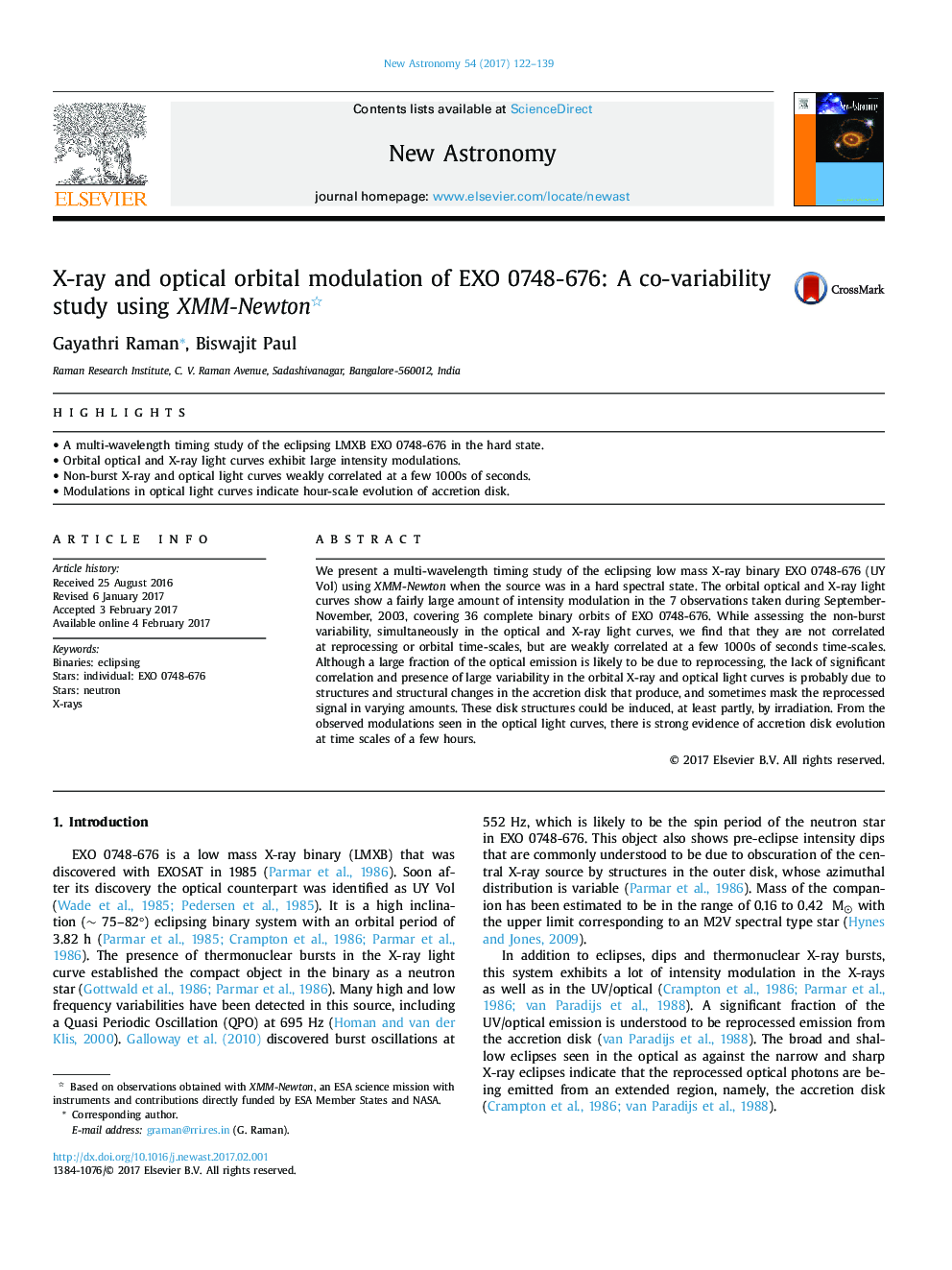| Article ID | Journal | Published Year | Pages | File Type |
|---|---|---|---|---|
| 5487780 | New Astronomy | 2017 | 18 Pages |
Abstract
We present a multi-wavelength timing study of the eclipsing low mass X-ray binary EXO 0748-676 (UY Vol) using XMM-Newton when the source was in a hard spectral state. The orbital optical and X-ray light curves show a fairly large amount of intensity modulation in the 7 observations taken during September-November, 2003, covering 36 complete binary orbits of EXO 0748-676. While assessing the non-burst variability, simultaneously in the optical and X-ray light curves, we find that they are not correlated at reprocessing or orbital time-scales, but are weakly correlated at a few 1000s of seconds time-scales. Although a large fraction of the optical emission is likely to be due to reprocessing, the lack of significant correlation and presence of large variability in the orbital X-ray and optical light curves is probably due to structures and structural changes in the accretion disk that produce, and sometimes mask the reprocessed signal in varying amounts. These disk structures could be induced, at least partly, by irradiation. From the observed modulations seen in the optical light curves, there is strong evidence of accretion disk evolution at time scales of a few hours.
Related Topics
Physical Sciences and Engineering
Physics and Astronomy
Astronomy and Astrophysics
Authors
Gayathri Raman, Biswajit Paul,
